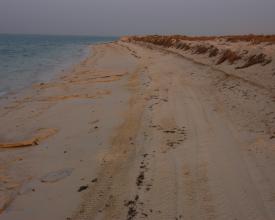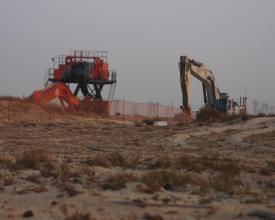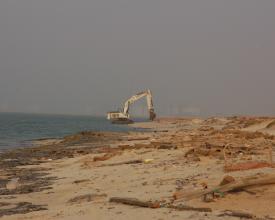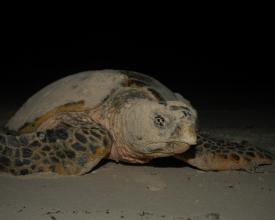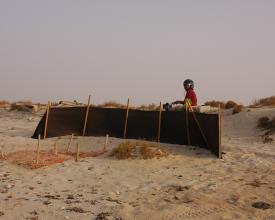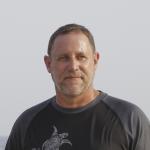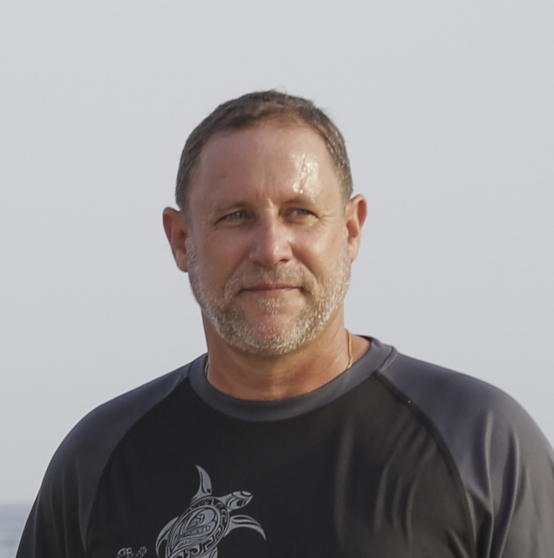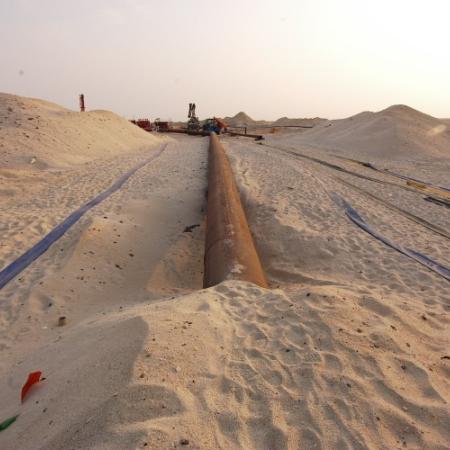
Solving conflicts between endangered sea turtles and the oil & gas industry
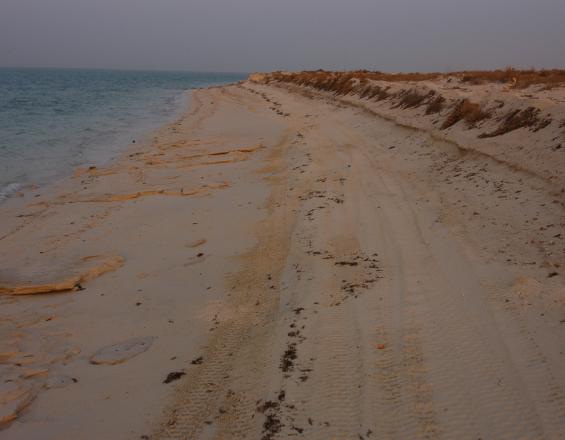
Endangered sea turtles require access to beaches to lay eggs. The oil & gas industry occasionally requires pipelines to cross these beaches, as raw materials are pumped onshore for refining, or refined materials are pumped offshore for transport.
An environmental solution that would be efficient, practical, effective, and harmless to sea turtles was required. The solution was to bury the pipeline underground outside of nesting season in a manner that would not impact future nesting or development of turtle embryos, nor affect native flora that stabilises beach dunes where turtles nest.
We addressed timing (no turtles on the beach), plant protection (to stabilise sand dunes), sand removal (in stages), beach re-engineering (in reverse to account for salt content), and post-activity assessments. The process proved practical, cost-effective, and did not impact sea turtles.
We suggest where pipeline routing and turtle nesting beaches coincide, this solution is can mitigate impacts to sea turtles.
Context
Challenges addressed
Sea turtles need clean, unobstructed beaches upon which to lay eggs. Pipelines crossing above ground can deter nesting, limit access to nesting areas, influence hatchling orientation, and impact nesting success and reproductive output. By burying the pipeline we eliminated all of these challenges and allowed nesting by endangered sea turtles to continue unimpeded.
From a cost perspective, the pipeline requires protection and burial is a practical solution. The challenge lays in installing the pipeline and rehabilitating the beach to be suitable once again for nesting. Our solution solved this challenge through timing, sand layering, native vegetation protection, and ongoing monitoring to ensure success.
The client was challenged by the approving authorities to install the pipeline in such a way as to not impair sea turtle nesting. By burying the pipeline the solved the regulatory requirements also.
Location
Process
Summary of the process
During initial dialogue with the industry partner we were able to get a step by step understanding of what they needed to do.
We then provided an indication of the habitat and biological needs of the endangered sea turtles.
Together we then devised solutions to each of the pipeline laying steps.
To ensure that all of the work proceeded according to plan, the industry partner provided an on-site project manager to supervise the operations, and then we conducted three years of monitoring and compared the results to baseline data to determine if the development had impacted sea turtles.
Building Blocks
Open dialogue with business partner
An open, transparent discussion of biological needds and constraints, and options for solutions to the chalneges was a key building block in the process.
Enabling factors
Personal relationship wiht company Managing Director, and several yers of experience working with industry players in the country provided a platform upon which we could build an environmental solution.
Lesson learned
Professional relationships built on trust and understanding were crucial. Crucail also was the sceintific knowledge that enabled the design of the solution, and which took into account the biology of the spceis and the habitat needs and constraints that would have been introduced via a 'business as usual' approach..
Knowledge of biological needs of the species
Without an understanding of the biological processes under threat, it would have been impossible to design solutions. For instance, knowledge of the need for dune structures and the importance of native flora as stabilising agents, or salinity impacts on eggs, seasonality of nesting, etc. were crucial in designing the stepwise approach.
Enabling factors
Over two decades of experience working with the species, and also a decade of experience working with industry partners and understanding their limitaitons, drivers, operational constraints and in-house environmental policies were important in being able to develop the solution.
Lesson learned
Industry already had a tentative plan. The plan did not take into account the biology of the impacted species. By tweaking the plan to ensure there were minimal cost diffferences, and practical, implementable ground operations, the solution met budget considerations while providing a solution tat was acceptable to the regulator and to the sea turtles.
Ongoing monitoring
To ensuire the solution worked, we monitored nesting and hatchling dispersal for three consecutive seasons following beach rehabilitation, and determined that there were no impacts to nesting sea turtles or emerging hatchlings.
Enabling factors
We had several years of baseline data with whcih to compare data post-construction. We also had access to the beach and the support of the reglator in conducting the monitoring activities.
Lesson learned
Baseline data are crucial to determine impacts. Often industries develop infrastructure in the abence of basline data and this then precludes an assessment of impacts.
Impacts
Potential impacts can be broken down into four key areas:
1. Timing. The process took place outside of nesting and hatching season so that turtles would not be impacted by personnel or machinery.
2. Protection of flora. Native flora is important in stabilising dunes where turtles nest. Flora was removed and maintained off-site. After re-engineering, it was replaced to maintain beach dune structure.
3. Stepwise removal and replacement of sand. Due to tidal inundation, sand layers contain varying levels of salt (with the deepest being the saltiest). Salt is a desiccant and can impact embryonic development. We removed the sand in layers, and replaced it in reverse order so that future nests would be deposited in similar salinity environments.
4. Impacts on nesting and hatchling dispersal. The beach was monitored for three seasons and no impacts to nesting distribution or hatchling sea-finding were detected.
Sea turtles are protected by law in Qatar. Being able to operate the world's largest natural gas fields and ensure minimal impacts to sea turtles was an important driver behind this project.
The highlights of this solution are in the timing, the sand layering, and the inclusion of sea turtle biology to take a mechanical process and turn it into an environmental solution, rather than an impact.
Beneficiaries
The main beneficiary was sea turtles, as nesting was never impeded on the beach.
Other beneficiaries were the industry players, through reputational advantages, improved relations with the regulators, and via commiments to in-house environmental policies.
Sustainable Development Goals
Story

I have seen numerous beach developments where consideration for biological processes was not taken into account. On the same beach, three years earlier, temporary pipelines were installed with no regard to safeguarding the beach habitat or protecting endangered sea turtles.
To have a company approach me and seek solutions to an environment / development challenge was inspiring, and I have been approached several times since by other companies to oversee similar pipeline beach crossing projects. It is pleasing to see what once a solution is known and understood, industry is keen to pick up on it and move forward, meeting reglatory requirements, in-house enviornmental policies and commitments, and demonstrating how wildlife and industry can coexist.

